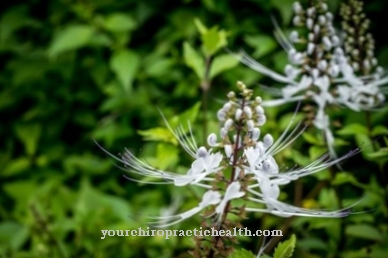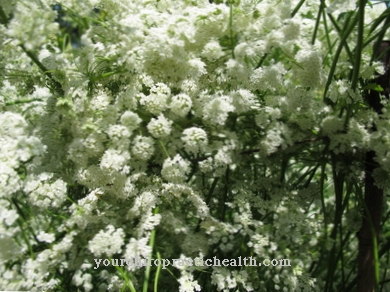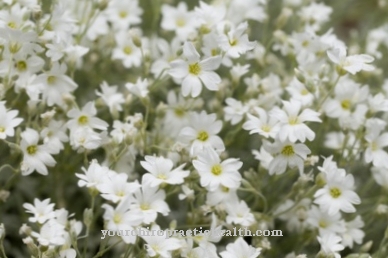Occurrence & cultivation of the brood root

In addition, the shrub has two white stipules at the base of each pair of leaves. The inflorescences of the plant are terminal and head-shaped. The flowers are surrounded by egg-shaped bracts and are themselves rather delicate and small. They are funnel-shaped and hermaphroditic. Their color is white. In addition, the fruit and stamens of the voles are dimorphic. In some flowers the stamens are long and the pistil short - in others it is the other way round. The plant forms fleshy drupes, which are red at first, but later turn a blue-black color.
The root is native to Central and South America. It is found in lowland rainforests from Nicaragua to Brazil. She can also be found in Colombia, Costa Rica, Ecuador and Panama. As a slow-growing plant, it is less suitable as a crop for plantations. The voles are evergreen and highly poisonous. Therefore, caution should be exercised in its use in folk medicine and it should only be used in very small amounts.
Effect & application
In medicine, the active ingredients of the emetic root are used as natural remedies. The main components are alkaloids such as emetine and cephaelin, iridoids, glycosides and various vegetable acids. The effect of the plant has not been proven by clinical studies, but it is used against a wide variety of complaints. Above all, the roots themselves are processed. Preparations of the plant require a prescription.
The contained alkaloids irritate the gastric mucosa, which leads to an increase in bronchial secretions. Medicine makes use of this effect. However, if the plant is dosed too high, it triggers strong nausea. And not only that. It irritates the respiratory organs and affects the nerves and blood vessels. If the dosage is incorrect, it can lead to bloody diarrhea, nausea, pain and an inflamed, coated tongue. In addition, there is often an aversion to ingestion of food and vomiting of food, drinks and blood.
In the area of the respiratory tract, the root can lead to a strong cough with rattling mucus. It can also cause shortness of breath and long bleeding. A slight fever is also possible. Seizures have also been observed, especially in children. It is therefore particularly important to pay attention to the correct amount of active ingredients. For example, the root is processed into globules in adapted quantities.
Its main area of application is also the treatment of digestive problems and diseases of the respiratory organs. When diluted, it has a positive effect on health and can help alleviate discomfort. In addition to being processed into globules, vomiting root is also found in syrup, which is used to treat respiratory diseases.
There are also preparations in tablet or drop form as well as liquid injections. Various types of root are available on the market. The differences in appearance and color are due to the age and watering of the plant.
Importance for health, treatment & prevention
The areas of application of the root of the earth in homeopathy are varied. It is effective against trachea, stomach or intestinal catarrh, whooping cough or asthma. It is also used against intermittent fever. The remedy is sometimes used as an expectorant and emetic. Other areas of application are the treatment of dizziness, flu-like infections and stomach problems.
Especially for people with sensitive stomachs and difficulties with stomach pains, the use of preparations with emetic root is recommended. Another main area of application is the use of herbal supplements with emetic roots to - as the name suggests - to induce nausea. This is the case, for example, if the affected person vomits due to poisons ingested orally.
In this way, most of the ingested poison can be removed from the body before other therapeutic steps are initiated. In addition, emetic root is occasionally used to treat amoebic dysentery. In the past, emetic root was also used in the treatment of bronchitis, although there are now far more effective drugs for this. In homeopathy, the plant is also used against migraines, travel sickness, conjunctivitis and menstrual complaints.
It is said to have a positive and brightening effect on the psyche in the case of restlessness and slight irritability. It is also classified as obstetrical and is used to prevent bleeding around the uterus. In teething children, the plant should also help against teething problems. However, this is not advisable as the effects of the plant on children are not clear. Discomfort can arise.
The situation is similar for people who are sensitive to one of the active ingredients it contains. Pregnant and breastfeeding women should also avoid taking emetic root preparations. The side effects could be too severe and cause damage. External contact with the volar may cause irritation and contact allergies.












.jpg)



.jpg)










.jpg)
